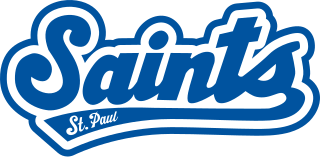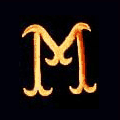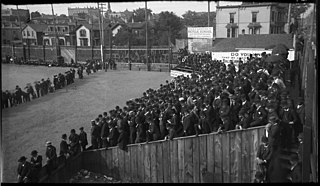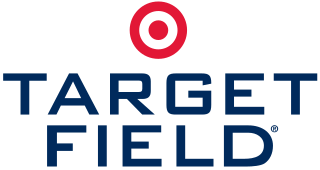
Metropolitan Stadium was an outdoor sports stadium in the north central United States, located in Bloomington, Minnesota, a suburb of Minneapolis.

The St. Paul Saints are a Minor League Baseball team of the International League and the Triple-A affiliate of the Minnesota Twins. They are located in Saint Paul, Minnesota, and have played their home games at CHS Field since 2015. They previously played at Midway Stadium from 1993 to 2014.

The Minneapolis Millers were an American professional minor league baseball team that played in Minneapolis, Minnesota, through 1960. In the 19th century a different Minneapolis Millers were part of the Western League. The team played first in Athletic Park and later Nicollet Park.

Gratia Alta Countryman was a nationally-known librarian who led the Minneapolis Public Library from 1904 to 1936. She was the daughter of immigrant farmers Alta and Levi Countryman. She pioneered many ways to make the library more accessible and user-friendly to all of the city's residents, regardless of age or economic position. Countryman was called the "first lady of Minneapolis" and the "Jane Addams of the libraries".

Nicollet Park was a baseball ground located in Minneapolis, Minnesota, United States. The venue was home to the minor league Minneapolis Millers of the Western League and later American Association from 1896 to 1955.

Lexington Park was the name of a former minor league baseball park in St. Paul, Minnesota. It was the home of the St. Paul Saints from 1897 through 1956, when it was replaced by the first version of Midway Stadium.

Calvin Robertson Griffith, born Calvin Griffith Robertson, was a Canadian-born American Major League Baseball team owner. As president, majority owner and de facto general manager of the Washington Senators/Minnesota Twins franchise of the American League from 1955 through 1984, he orchestrated the transfer of the Senators after 60 years in Washington, D.C., to Minneapolis–Saint Paul in the autumn of 1960 to create the Twins. He was famous for his devotion to the game and for his sayings. He was the last MLB owner who had no income apart from his franchise.
The Great Central League was a short-lived baseball league of four teams that played baseball in the upper Midwest of the United States in 1994. The league and four teams were owned by Minneapolis-based strip club owner, Dick Jacobson, who previously attempted to purchase the Rochester Aces of the Northern League.
The Western League was the name of several minor league baseball leagues that operated between 1885 and 1900. These leagues were focused mainly in the Midwestern United States.

Athletic Park was the home of the Minneapolis Millers baseball team from 1889 to mid-season 1896. The park was located behind the West Hotel at 6th St and 1st Ave North in Minneapolis near where Target Center and Target Field are today.

Target Field is a baseball stadium in the historic warehouse district of downtown Minneapolis. Since its opening in 2010, the stadium has been the ballpark of Major League Baseball's Minnesota Twins. It is named for Target Corporation, which is headquartered in Minneapolis. The stadium hosted the 2014 Major League Baseball All-Star Game. It has also served as the home of other local and regional baseball events.
Stew Thornley is an author of books on sports history, particularly in his home state. He is an official scorer and online gamecaster for the Minnesota Twins. Thornley also does official scoring for Minnesota Timberwolves basketball games.
Halsey Lewis Hall was a sports reporter and announcer in the Minneapolis–Saint Paul area from 1919 until the 1970s.

Downtown Saint Paul is the central business district of Saint Paul, Minnesota, United States. Its boundaries are the Mississippi River to the south, University Avenue to the north, US 52 to the east, and Kellogg Boulevard to the west. It is bounded by the Dayton's Bluff, Summit-University, West Seventh, Frogtown, West Side, and Payne-Phalen neighborhoods. The West Side neighborhood is on the other side of the river, and can be accessed via the Robert Street Bridge or the Wabasha Street Bridge. Interstate 35E and Interstate 94 run through the north side of the neighborhood, providing a separation between the Minnesota State Capitol and other state government buildings with the rest of downtown.
The St. Paul Saints were a 20th-century Minor League Baseball team that played in the American Association from 1901 to 1960 in the city of St. Paul, Minnesota. The 1920, 1922, and 1923 Saints are recognized as being among the 100 greatest minor league teams of all time.

Rolland John Seltz was an American professional basketball player who played in the National Basketball Association (NBA) during its first year of existence. He played 34 games for the Anderson Packers during the 1949–50 season.

CHS Field is a baseball park in downtown Saint Paul, Minnesota. It is home to the St. Paul Saints of the International League of Minor League Baseball, as well as home to Hamline University's baseball team. With the Saints' affiliation to the Minnesota Twins, beginning in 2021, CHS Field is the second smallest Triple-A ballpark in the Minors, and the closest to its tenant's parent MLB club.
The Minnesota Norsemen were a professional softball team that played in the American Professional Slo-Pitch League (APSPL) during the 1978 and 1979 seasons. The team had played as the Minnesota Goofy's in the 1977 season, changing names for 1978. They played their home games at Midway Stadium in St. Paul, Minnesota.
Hamline-Midway, or just Midway, is a neighborhood and city planning district in Saint Paul, Minnesota, in the United States. It is Planning District 11. The neighborhood is bounded by Transfer Road on the west, University Avenue on the south, Lexington Parkway on the east, and by the railroad tracks just north of the Pierce Butler Route, on the north. The unofficial boundaries are more loosely defined, however, and the term "Midway" is applied throughout this part of Saint Paul, often well beyond the actual location of the district. The 'Midway' name comes from being midway between downtown Minneapolis and downtown Saint Paul.












